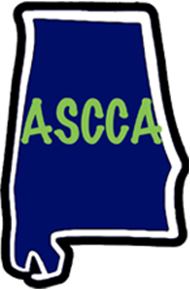Published 8:46pm Friday, May 6, 2011
alexcityoutlook.com
Story and photo by Natalie Nettles
Radney’s sixth grade enrichment class spent Friday morning searching for critters in a stream at Alabama’s Special Camp For Children and Adults.
Enrichment teacher Laurie Barrett said the activity, which her fifth grade class participated in Thursday, was the culmination of their water education studies.
“We call it their culminating performance task – their final exam,” she said. “They’re doing a bioassessment and they’re kind of having a competition to see who can correctly identify the most macroinvertebrates. The goal is, hopefully, that the kids will find macroinvertebrates from each of the groups – which is one, two and three — and it will show that this is a biodiverse stream and an indicator of good water.”
Davis Lutz worked with classmates Erica Patterson, Lilly Coker and Caroline Floyd.
“We’re doing some water testing,” he said. “So far it looks like its not polluted because we’re finding category one and category two bugs, which means it’s not polluted.”
Nearby, Lake Watch Lake Martin President Dick Bronson joined a group of students in a search that resulted in two rare findings – a mottled sculpin and a damselfly.
“This fish is an extremely special fish,” Bronson said while holding a mottled sculpin.
“They’re quite unusual to find. They’re not endangered, but you will only find these critters in extremely clean water. And the only place we find them around here is this little stream. And then that is a damselfly. That’s an unusual find also. We don’t find those hardly ever out here. That’s an indicator of very clean water.”
After searching about an hour, the students gathered by the stream to share their findings.
“We found a bajillion caddisflies, a bajillion right-handed snails, a mayfly, a stonefly, crayfish, I caught a dragonfly, salamanders and aquatic worms,” Aubrey Guibry said.
“We got some right handed snails, we got two crayfish, we got some crane flies, aquatic worms, salamanders, some stoneflys and a caddisfly house,” Savannah Bush said.
Barrett said it was great to see the students taking such interest in the project.
“Yesterday a group, we kind of laughed and said they were off the charts, because they found several macroinvertebrates that aren’t on the charts. There was one that a student named the Spencer beetle because we went online and couldn’t find anything that looks like it at all,” Barrett said. “ So maybe they found a new species, I don’t know. That’s kind of fascinating that they can find something that we don’t know what it is.”
After the students reported their findings, Bronson shared his conclusion.
“We found lots of ones, twos and threes,” he said. “This is a very clean stream and very biodiverse. This is a beautiful little stream that is always going to be clean.we hope.”

Located in Alabama on Lake Martin, Camp ASCCA offers campers a wide variety of traditional recreational and educational activities with a unique design for accessibility.

Sign up for our eNewsletter to keep up with events and happenings at Camp ASCCA!